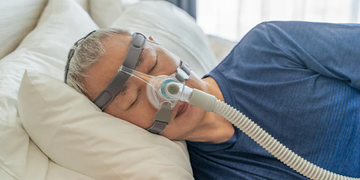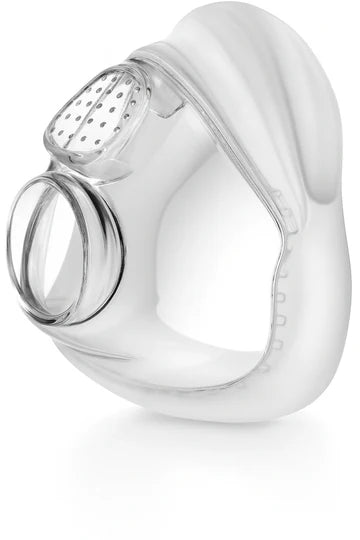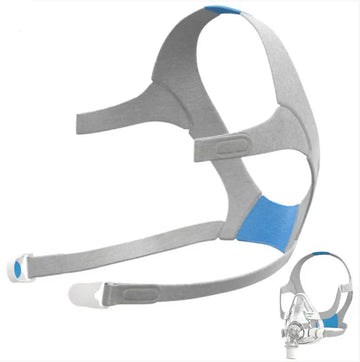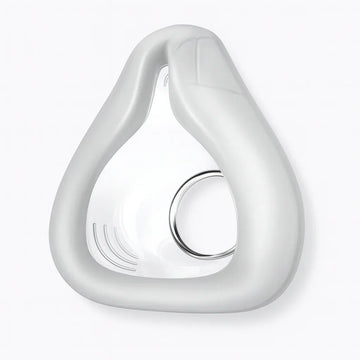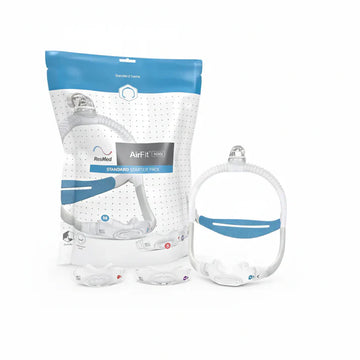If you’ve been prescribed CPAP therapy to treat sleep apnea, you already know how much of a difference it can make in your sleep quality and daily life. A properly fitted CPAP mask, along with clean and functioning accessories, ensures you get the right airflow throughout the night. But one question many people forget to ask is: how often should I replace my CPAP mask and accessories?
Just like any other medical equipment, CPAP masks, headgear, tubing, and filters wear out over time. Using old or damaged equipment can affect comfort, reduce therapy effectiveness, and even cause health issues. In this guide, we’ll explain the typical replacement schedule, why it matters, and how to keep your equipment in the best condition.
Why Replacing CPAP Equipment Matters
Many people are tempted to hold onto their CPAP mask or accessories for as long as possible. After all, if it looks fine, why change it? The truth is that these items are exposed to nightly use, moisture, and oils from your skin. Over time, this leads to:
-
Air leaks – Worn-out cushions lose their seal, making your therapy less effective.
-
Bacteria build-up – Even with regular cleaning, old materials can harbour germs.
-
Reduced comfort – Straps stretch out, and cushions become less soft.
-
Shortened machine life – Clogged filters and tubing problems can strain your CPAP machine.
Replacing parts on time keeps your therapy effective, your health protected, and your sleep comfortable.
How Often Should You Replace CPAP Parts?
Here’s a general replacement schedule recommended by sleep specialists and manufacturers like ResMed:
1. CPAP Mask Cushion or Nasal Pillows – Every 1 to 3 Months
The CPAP mask cushion is the part that touches your face or nostrils. With daily use, it absorbs skin oils, which break down the silicone and cause leaks. If you notice air escaping or need to tighten straps more than usual, it’s time for a replacement.
2. CPAP Mask Frame – Every 3 to 6 Months
The ResMed CPAP frame holds the cushion and attaches to the headgear. While it lasts longer than the cushion, it still experiences wear and tear. A cracked or bent frame can affect the fit of your mask.
3. CPAP Headgear – Every 6 Months
The ResMed CPAP headgear straps stretch over time, making it harder to maintain a snug but comfortable fit. Overtightening straps can cause red marks and discomfort, so replacing the headgear every six months helps maintain balance between fit and comfort.
4. CPAP Tubing – Every 6 to 12 Months
Your CPAP tubing and hoses carries pressurised air from the machine to your mask. Moisture and bacteria can build up inside, and small cracks or holes may reduce pressure levels. Heated tubing may need more frequent replacement since it’s more delicate.
5. CPAP Filters – 2 Weeks to 6 Months
CPAP filters protect your CPAP machine by keeping dust and allergens out. Disposable filters should be changed every 2–4 weeks, while reusable ones can last 3–6 months with regular cleaning. A dirty filter not only reduces airflow but can also shorten the life of your device.
6. CPAP Humidifier Chamber – Every 6 to 12 Months
If your CPAP machine has a CPAP humidifier, the water chamber can become cloudy or develop mineral build-up. Cracks or leaks are common after several months of use. Regular replacement ensures clean, comfortable moisture with your therapy.
Signs It’s Time to Replace Your CPAP Accessories
Even if you follow a schedule, you should also pay attention to warning signs that your equipment is wearing out. Look out for:
-
Visible cracks, tears, or cloudiness in silicone or plastic parts
-
A mask that doesn’t fit well, even after adjusting straps
-
Red marks or skin irritation from stretched headgear
-
A musty or unpleasant smell from tubing or humidifier chambers
-
More frequent air leaks despite cleaning
-
Filters that look grey, dusty, or clogged
If you notice any of these, it’s better to replace the part sooner rather than later.
How to Extend the Life of Your CPAP Equipment
While replacement is necessary, good maintenance can help you get the most out of your accessories. Here are some tips:
-
Clean daily – Wash mask cushions and nasal pillows with mild soap and warm water.
-
Weekly deep clean – Clean tubing, humidifier chamber, and headgear straps.
-
Use distilled water – Prevents mineral build-up in your humidifier chamber.
-
Avoid harsh cleaners – Never use bleach, vinegar, or strong detergents that can damage silicone.
-
Store properly – Keep your CPAP equipment in a clean, dry place away from direct sunlight.
By following these steps, you’ll improve hygiene and reduce wear.
Where to Buy Replacement CPAP Masks and Accessories
Getting authentic, high-quality parts is just as important as replacing them on time. At CPAP Studio, we stock a wide range of CPAP masks, headgear, tubing, humidifier chambers, and filters from trusted brands like ResMed. Whether you need a new full-face mask, nasal mask, or nasal pillows, we make it easy to find the right fit for your therapy.
Shopping with us means:
-
Genuine products recommended by sleep professionals
-
Affordable prices with regular discounts
-
Fast UK delivery so you never have to miss a night of therapy
Final Thoughts
Your CPAP mask and accessories are vital to keeping your therapy effective and comfortable. Over time, these parts naturally wear out, leading to air leaks, discomfort, or reduced machine performance. Following a regular replacement schedule and paying attention to early signs of wear ensures you get the best results from your CPAP therapy.
If you’re unsure whether it’s time to replace your equipment, ask yourself: Does my mask still fit comfortably? Is my therapy working as well as before? If the answer is no, it may be time for an upgrade.
At CPAP Studio, we’re here to help you every step of the way with high-quality CPAP masks and CPAP Machine accessories that keep your therapy on track. Because better sleep means better health.

